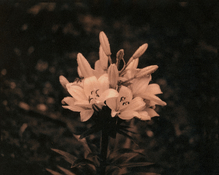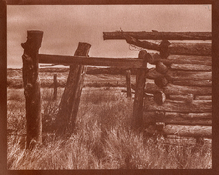aconbere
Subscriber
I’ve been spending the last few months refining my cyanotype printing process and have gotten somewhere that I’m pretty happy with.
I’d love to be toning some of my prints but I have had only a little luck and it’s left me confused. Would love it if anyone had any advice. I’ll try to document my process. I apologize that I don’t have good pictures of dry prints at every stage, hopefully this is good enough to get the idea.
First off I’m using Christina Anderson and Annette Golaz’s books as reference / guidance. Places I’m confused are that for instance Annette says that cyanotypes should not need bleaching for tea toning and that at 125F I should see results in about an hour (but also mentions it could take 24! Maybe I’m inpatient).
I’m printing with new cyanotype. I mixed the sensitizer myself and I’m by and large happy with my results.
I’m attempting to tone with green tea. I’m starting from a dry print. My toner is 20g of loose leaf tea steeped in 1L of boiling water for 15min. I begin toning when it reaches 125F.
I start by wetting the print for about a minute in plain water (tap). Then adding the print facedown to the toner.
I really need to get better at taking pictures of every step, but while this is not the exact test strip it is representative of the starting print tones.

First I tried without bleaching. 1 hour in the toner. Started at 125F but has since cooled to room temp. This is a very different color than before toning! But definitely not the brown / black I’ve seen folks achieve.

The I tried bleaching the print first. I fully bleached i back with sodium carbonate until a mustard yellow color.

Then added it to the toner. After 6-7 minutes it stopped changing color and achieved this final “light brown”. While writing this I’m noticing that in bleaching there was some density lost and the darkest shadows of the step wedge aren’t at d-max anymore. I wonder if I’d be happier with this if I added some exposure.

Lastly I had a print that I tried toning last week that wasn’t bleached. Like the example it became I kind of dark purple. And then I tried bleaching it after toning. (note this is overexposed as I was working off a silver negative and got times wrong!)

and after toning and bleaching… it did turn black! (with a LOT of staining in the highlights).

phew that was a lot, given all of that would love folks thoughts. Should I expect to bleach my prints? Should I give the unbleached prints more time? Is New Cyanotype important? Does it tone differently? Are there things I haven’t considered?
Thank you!
I’d love to be toning some of my prints but I have had only a little luck and it’s left me confused. Would love it if anyone had any advice. I’ll try to document my process. I apologize that I don’t have good pictures of dry prints at every stage, hopefully this is good enough to get the idea.
First off I’m using Christina Anderson and Annette Golaz’s books as reference / guidance. Places I’m confused are that for instance Annette says that cyanotypes should not need bleaching for tea toning and that at 125F I should see results in about an hour (but also mentions it could take 24! Maybe I’m inpatient).
I’m printing with new cyanotype. I mixed the sensitizer myself and I’m by and large happy with my results.
I’m attempting to tone with green tea. I’m starting from a dry print. My toner is 20g of loose leaf tea steeped in 1L of boiling water for 15min. I begin toning when it reaches 125F.
I start by wetting the print for about a minute in plain water (tap). Then adding the print facedown to the toner.
I really need to get better at taking pictures of every step, but while this is not the exact test strip it is representative of the starting print tones.
First I tried without bleaching. 1 hour in the toner. Started at 125F but has since cooled to room temp. This is a very different color than before toning! But definitely not the brown / black I’ve seen folks achieve.
The I tried bleaching the print first. I fully bleached i back with sodium carbonate until a mustard yellow color.
Then added it to the toner. After 6-7 minutes it stopped changing color and achieved this final “light brown”. While writing this I’m noticing that in bleaching there was some density lost and the darkest shadows of the step wedge aren’t at d-max anymore. I wonder if I’d be happier with this if I added some exposure.
Lastly I had a print that I tried toning last week that wasn’t bleached. Like the example it became I kind of dark purple. And then I tried bleaching it after toning. (note this is overexposed as I was working off a silver negative and got times wrong!)
and after toning and bleaching… it did turn black! (with a LOT of staining in the highlights).
phew that was a lot, given all of that would love folks thoughts. Should I expect to bleach my prints? Should I give the unbleached prints more time? Is New Cyanotype important? Does it tone differently? Are there things I haven’t considered?
Thank you!


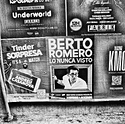






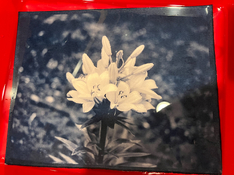
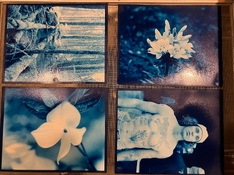
 . In this case the 145gsm variety. Christina Anderson noted it in her book as being a favorite of hers and I could buy a bunch for relatively cheap.
. In this case the 145gsm variety. Christina Anderson noted it in her book as being a favorite of hers and I could buy a bunch for relatively cheap.

